Exploring the Effects of Alternative Water Demand Management Strategies Using an Agent-Based Model
Abstract
:1. Introduction
2. Materials and Methods
2.1. Water Demand Management Strategies
2.2. Water Demand Scenarios
2.3. Water Supply Time Series
3. Results
- Conventional kitchen sink (consuming 2.1 liters per use [42])
- Conventional hand basin (consuming 2.1 liters per use [42])
- Conventional dish washer (consuming 35 liters per use [8])
- Conventional toilet cistern (consuming 9 liters per use [8])
- Conventional washing machine (consuming 60 liters per use [42])
- Conventional shower head (consuming 60 liters per use [43])
- Conventional 30-meter hose for outdoor uses (consuming 10 liters per use [43])
- Scenario 3: 1350 million liters of unmet demand in September 2022 from the Hylike reservoir (see Figure 4e)
- Scenario 4: 13.700 million liters of unmet water demand in August 2022 and 708 million liters of unmet water demand in September 2022 from the Hylike reservoir (see Figure 4g)
- Scenario 5: 62.900 million liters of Hylike’s unmet water demand from June to September 2022 and a total of 27.200 million liters of Mornos’ unmet water demand during September and October 2022 (see Figure 4i,j)
Testing Alternative Water Demand Management Strategies
- Strategy a decreased average unmet demand by 1% for both reservoirs
- Strategy b decreased average unmet demand by 98% for Mornos and 30% for Hylike reservoir
- Strategy c decreased average unmet demand by 100% for Mornos and 39% for Hylike reservoir
- Strategy d decreased average unmet demand by 100% for Mornos and 43% for Hylike reservoir
- Strategy e decreased average unmet demand by 100% for Mornos and 40% for Hylike reservoir
- Strategy f decreased average unmet demand by 100% for Mornos and 43% for Hylike reservoir
4. Discussion and Conclusion
Author Contributions
Funding
Acknowledgments
Conflicts of Interest
References
- Makropoulos, C.; Natsis, K.; Liu, S.; Mittas, K.; Butler, D. Decision support for sustainable option selection in integrated urban water management. Environ. Model. Softw. 2008, 23, 1448–1460. [Google Scholar] [CrossRef]
- Gleick, P.H. Global freshwater resources: Soft-Path solutions for the 21st century. Science 2003, 302, 1524–1528. [Google Scholar] [CrossRef] [PubMed]
- Butler, D.; Memon, F.A. (Eds.) Water Demand Management; IWA Publishing: London, UK, 2006. [Google Scholar]
- Mitchell, V.G. Applying integrated urban water management concepts: A review of Australian experience. Environ. Manag. 2006, 37, 589–605. [Google Scholar] [CrossRef]
- Brown, R.R.; Farrelly, M.A. Delivering sustainable urban water management: A review of the hurdles we face. Water Sci. Technol. A J. Int. Assoc. Water Pollut. Res. 2009, 59, 839–846. [Google Scholar] [CrossRef] [PubMed]
- Kampragou, E.; Apostolaki, S.; Manoli, E.; Froebrich, J.; Assimacopoulos, D. Towards the harmonization of water-related policies for managing drought risks across the EU. Environ. Sci. Policy 2011, 14, 815–824. [Google Scholar] [CrossRef]
- Koutiva, I.; Gerakopoulou, P.; Makropoulos, C.; Vernardakis, C. Exploration of domestic water demand attitudes using qualitative and quantitative social research methods. Urban Water J. 2017, 14, 307–314. [Google Scholar] [CrossRef]
- European Environment Agency (EEA). Sustainable Water Use in Europe: Part. 2e Demand Management; Environmental Issue Report No. 19; European Environment Agency: Copenhagen, Denmark, 2001. [Google Scholar]
- Corbella, H.M.; Pujol, D.S. What lies behind domestic water use? A review essay on the drivers of domestic water consumption. Bol. AGEN 2009, 50, 297–314. [Google Scholar]
- WFD. Directive 2000/60/EC of the European Parliament and of the Council of 23 October 2000. Off. J. Eur. Communities 2000, 22, 2000. [Google Scholar]
- EEA. Assessment of Cost Recovery Through Water Pricing; Technical Report No. 16/2013; European Environment Agency: Copenhagen, Denmark, 2013. [Google Scholar]
- EurEau. The Governance of Water Services in Europe. 2018. Available online: http://www.eureau.org/resources/news/1-the-governance-of-water-services-in-europe (accessed on 15 July 2019).
- WEI. Water Exploitation Index, Eurostat. 2019. Available online: https://ec.europa.eu/eurostat/databrowser/product/view/T2020_RD220?lang=en (accessed on 15 July 2019).
- Beal, C.D.; Steward, R.A.; Spinks, A.; Fielding, K. Believed versus actual household water use: Disaggregating end uses to inform water conservation attitudes in Qld, Australia. In Proceedings of the Sixth IWA Specialist Conference on Efficient Use and Management of Water, Dead Sea, Jordan, 29 March–2 April 2011. [Google Scholar]
- Hensher, D.; Shore, N.; Train, K. Water supply security and willingness to pay to avoid drought restriction. Econ. Rec. 2006, 82, 56–66. [Google Scholar] [CrossRef]
- Inman, D.; Jeffrey, P. A review of residential water conservation tool performance and influences on implementation effectiveness. Urban Water J. 2006, 3, 127–143. [Google Scholar] [CrossRef] [Green Version]
- Joireman, J.; Posey, D.C.; Barnes Truelove, H.; Parks, C.D. The environmentalist who cried drought: Reactions to repeated warnings about depleting resources under conditions of uncertainty. J. Environ. Psychol. 2009, 29, 181–192. [Google Scholar] [CrossRef]
- Howarth, D.; Butler, S. Communicating water conservation: How can the public be engaged? Water Sci. Technol. Water Supply 2004, 4, 33–44. [Google Scholar] [CrossRef]
- Pahl-Wostl, C.; Holtz, G.; Kastens, B.; Knieper, C. Analyzing complex water governance regimes: The Management and Transition Framework. Environ. Sci. Policy 2010, 13, 571–581. [Google Scholar] [CrossRef]
- Rozos, E.; Makropoulos, C. Source to tap urban water cycle modeling. Environ. Model. Softw. 2013, 41, 139–150. [Google Scholar] [CrossRef]
- Koutiva, I.; Makropoulos, C. Towards adaptive water resources management: Simulating the complete socio-technical system through computational intelligence. In Proceedings of the 12th International Conference on Environmental Science and Technology, Rhodes, Greece, 4–7 September 2011. [Google Scholar]
- Bach, P.M.; Rauch, W.; Mikkelsen, P.S.; Mccarthy, D.T.; Deletic, A. A critical review of integrated urban water modeling—Urban drainage and beyond. Environ. Model. Softw. 2014, 54, 88–107. [Google Scholar] [CrossRef]
- Behzadian, K.; Kapelan, Z.; Venkatesh, G.; Brattebø, H.; Sægrov, S.; Rozos, E.; Makropoulos, C.; Ugarelli, R.; Milina, J.; Hem, L. Urban water system metabolism assessment using WaterMet2 model. Procedia Eng. 2014, 70, 113–122. [Google Scholar] [CrossRef]
- Kossieris, P.; Makropoulos, C.; Creaco, E.; Vamvakeridou-Lyroudia, L.; Savic, D.A. Assessing the applicability of the bartlett-lewis model in simulating residential water demands. Procedia Eng. 2016, 154, 123–131. [Google Scholar] [CrossRef]
- Walski, T.; Chase, D.; Savic, D.; Grayman, W.; Beckwith, S.; Koelle, E. Advanced Water Distribution Modeling and Management; Civil and Environmental Engineering and Engineering Mechanics Faculty Publications, University of Dayton: Dayton, OH, USA, 2003. [Google Scholar]
- Koutiva, I.; Makropoulos, C. Modeling domestic water demand: An agent based approach. Environ. Model. Softw. 2016, 79, 35–54. [Google Scholar] [CrossRef]
- Mouatadid, S.; Adamowski, J. Using extreme learning machines for short-term urban water demand forecasting. Urban Water J. 2017, 14, 630–638. [Google Scholar] [CrossRef]
- Haque, M.M.; de Souza, A.; Rahman, A. Water demand modeling using independent component regression technique. Water Resour. Manag. 2017, 31, 299–312. [Google Scholar] [CrossRef]
- Koutiva, I. Agent Based Modeling of Domestic Water Demand for Adaptive Urban Water Management. Ph.D. Thesis, National Technical University of Athens (NTUA), School of Civil Engineering, Department of Water Resources and Environmental Engineering, Athens, Greece, 2015. [Google Scholar]
- Koutiva, I.; Makropoulos, C. Exploration of domestic water demand attitudes and behaviors using an online survey in Athens, Greece. In Proceedings of the 14th International Conference on Environmental Science and Technology, CEST2015, Rhodes, Greece, 3–5 September 2015. [Google Scholar]
- Koutiva, I.; Makropoulos, C. Exploring the effects of domestic water management measures to water conservation attitudes using agent based modeling. Water Sci. Technol. Water Supply 2017, 17, ws2016161. [Google Scholar] [CrossRef]
- Latane, B. The psychology of social impact. Am. Psychol. 1981, 36, 343–365. [Google Scholar] [CrossRef]
- Ajzen, I. The theory of planned behavior. Organ. Behav. Hum. Decis. Process. 1991, 50, 179–211. [Google Scholar] [CrossRef]
- Albert, R.; Barabási, A.L. Statistical mechanics of complex networks. Rev. Mod. Phys. 2002, 74, 47. [Google Scholar] [CrossRef]
- Kalogirou, S.; Papadakis, M.; Tsimpos, K. Population Projections of Kapodistrian Municipalities and Communities of Attica by Age and Sex: 2001–2021; Agency for the Regulatory Planning and Environmental Protection of Athens: Athens, Greece, 2011. [Google Scholar]
- Makropoulos, C.; Efstratiadis, A.; Koukouvinos, A. Assessment of the Financial Cost and Proposals for the Hydrosystem’s Management; Report for EYDAP S.A.; EYDAP S.A.: Athens, Greece, 2011. [Google Scholar]
- EYDAP. Management Plan of the Athens Water Supply System, Hydrological Year 2008–2009; The Athens Water Supply and Sewerage Company (EYDAP S.A.): Athens, Greece, 2009. [Google Scholar]
- Baki, S.; Makropoulos, C. Tools for Energy Footprint Assessment in Urban Water Systems. Procedia Eng. 2014, 89, 54–55. [Google Scholar] [CrossRef]
- Karavokiros, G.; Efstratiadis, A.; Koutsoyiannis, D. Hydronomeas: A System for Supporting Water Resources Management; Hydraulic and Maritime Engineering—National Technical University of Athens: Athens, Greece, 2002. [Google Scholar]
- Efstratiadis, A.; Dialynas, Y.G.; Kozanis, S.; Koutsoyiannis, D. A multivariate stochastic model for the generation of synthetic time series at multiple time scales reproducing long-term persistence. Environ. Model. Softw. 2014, 62, 139–152. [Google Scholar] [CrossRef]
- Castalia. A Computer System for Stochastic Simulation and Forecasting of Hydrologic Processes, 6.1; ITIA Research Team: Zografou, Greece; NTUA: Athens, Greece, 2008.
- Environment Agency. Assessing the Cost of Compliance with the Code for Sustainable Homes; Environment Agency: Bristol, UK, 2007; ISBN 1844326195.
- Grant, N. Water conservation products. In Water Demand Management; Butler, D., Memon, F.A., Eds.; IWA Publishing: London, UK, 2006; pp. 82–106. [Google Scholar]
- Athens Water and Sewerage Company (EYDAP). Pricing Policy Data; EYDAP S.A.: Athens, Greece, 2013. [Google Scholar]
- Makropoulos, C.; Nikolopoulos, D.; Palmen, L.; Kools, S.; Segrave, A.; Vries, D.; Koop, S.; van Alphen, H.J.; Vonk, E.; van Thienen, P.; et al. A resilience assessment method for urban water systems. Urban Water J. 2018, 15, 316–328. [Google Scholar] [CrossRef]
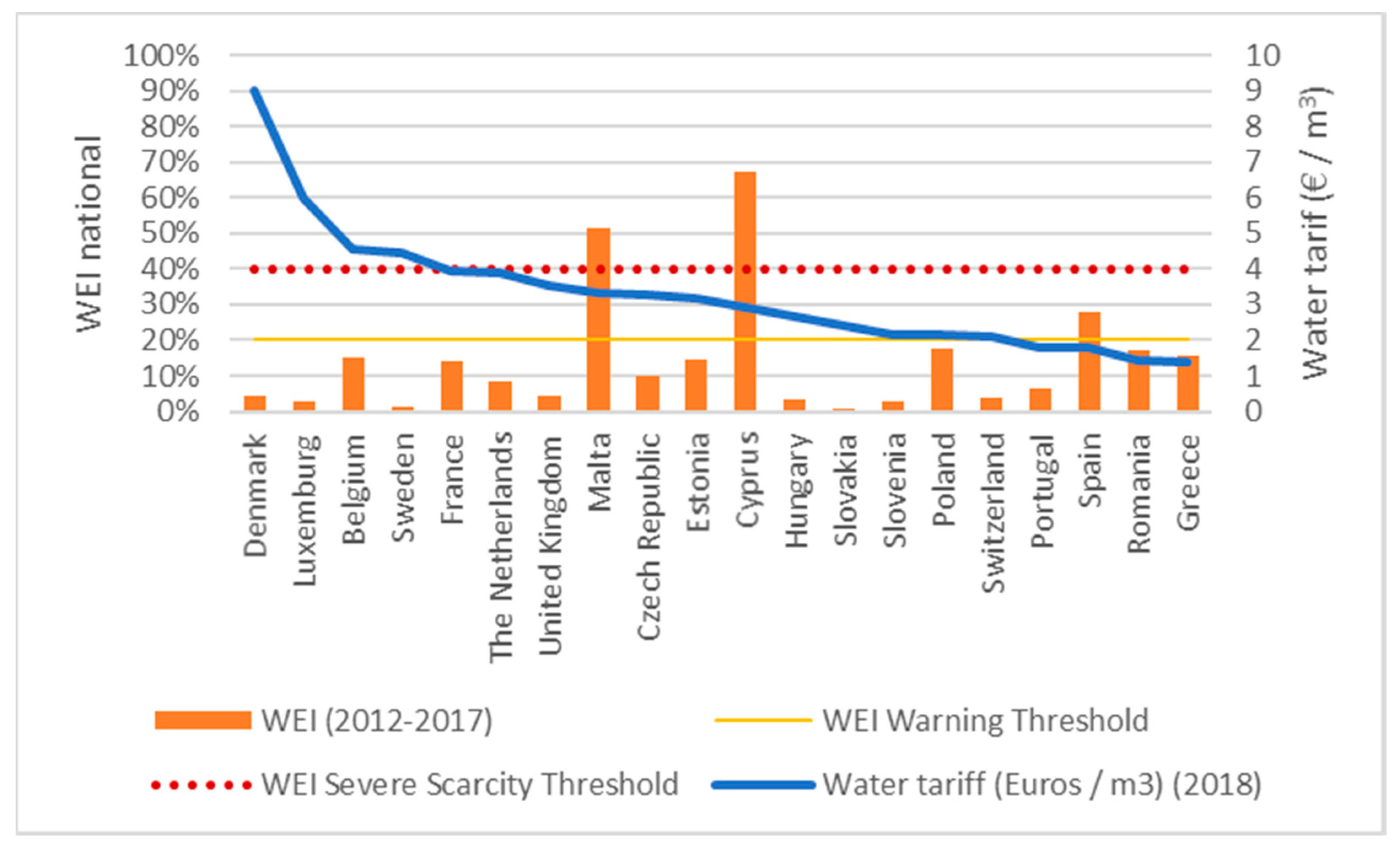
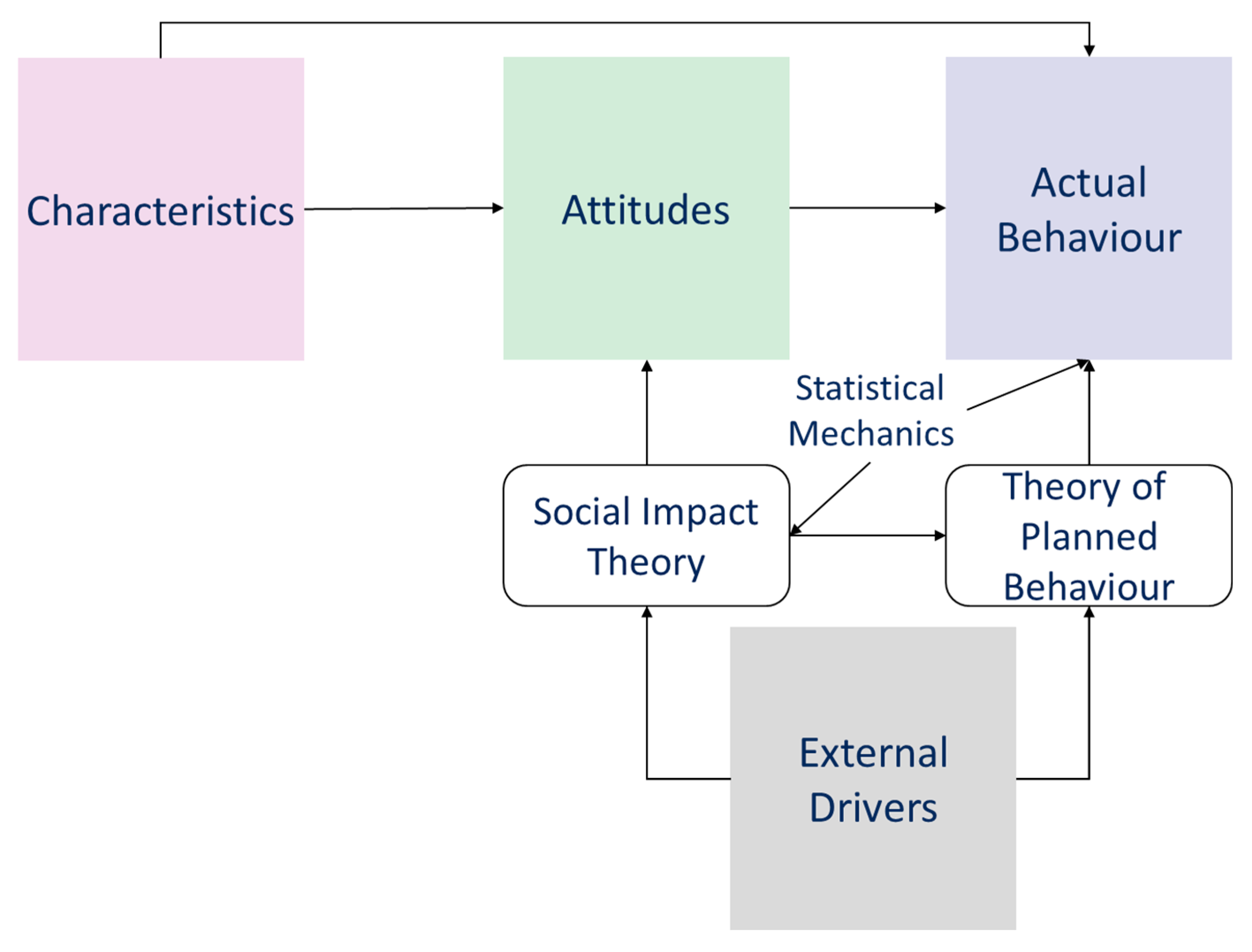
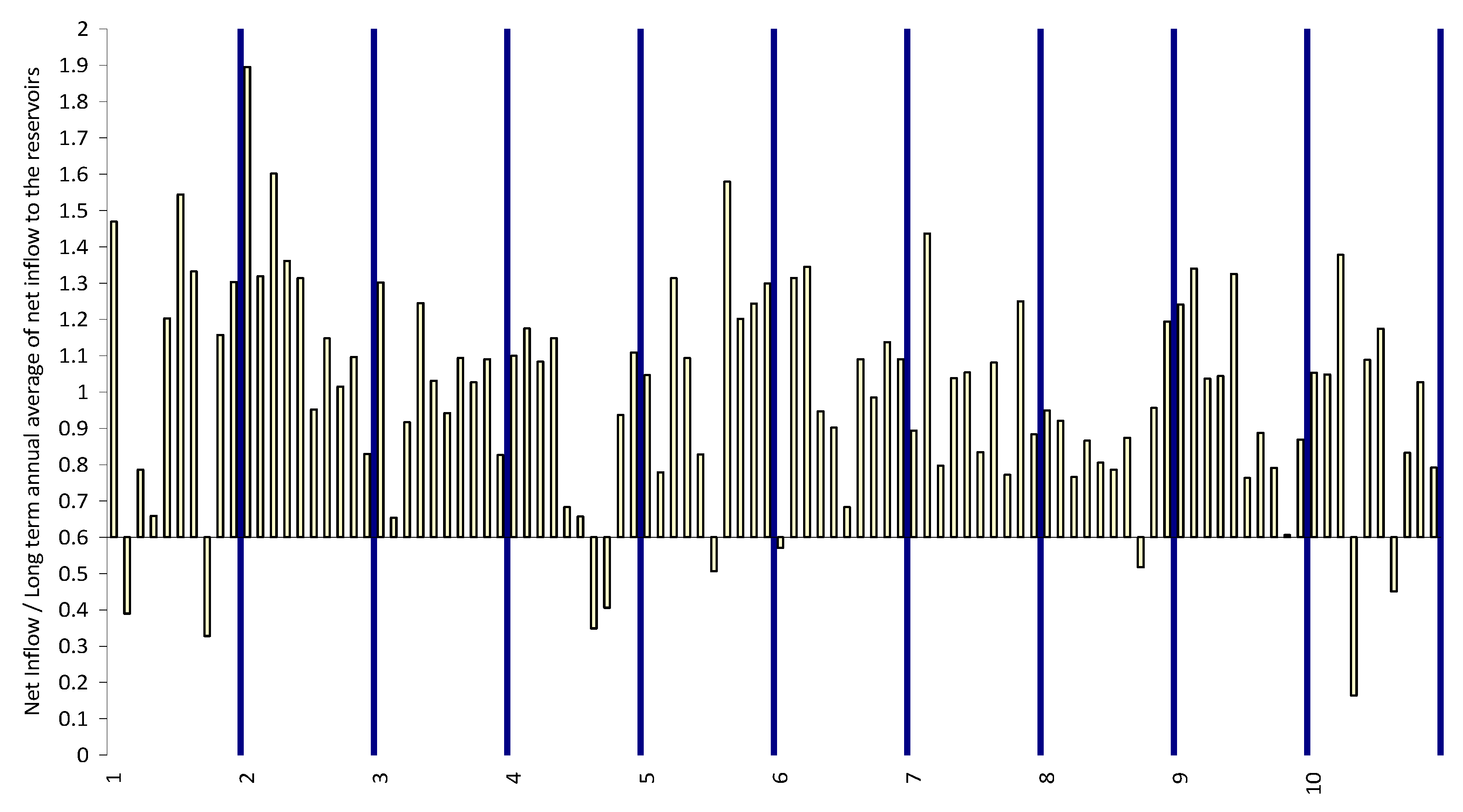

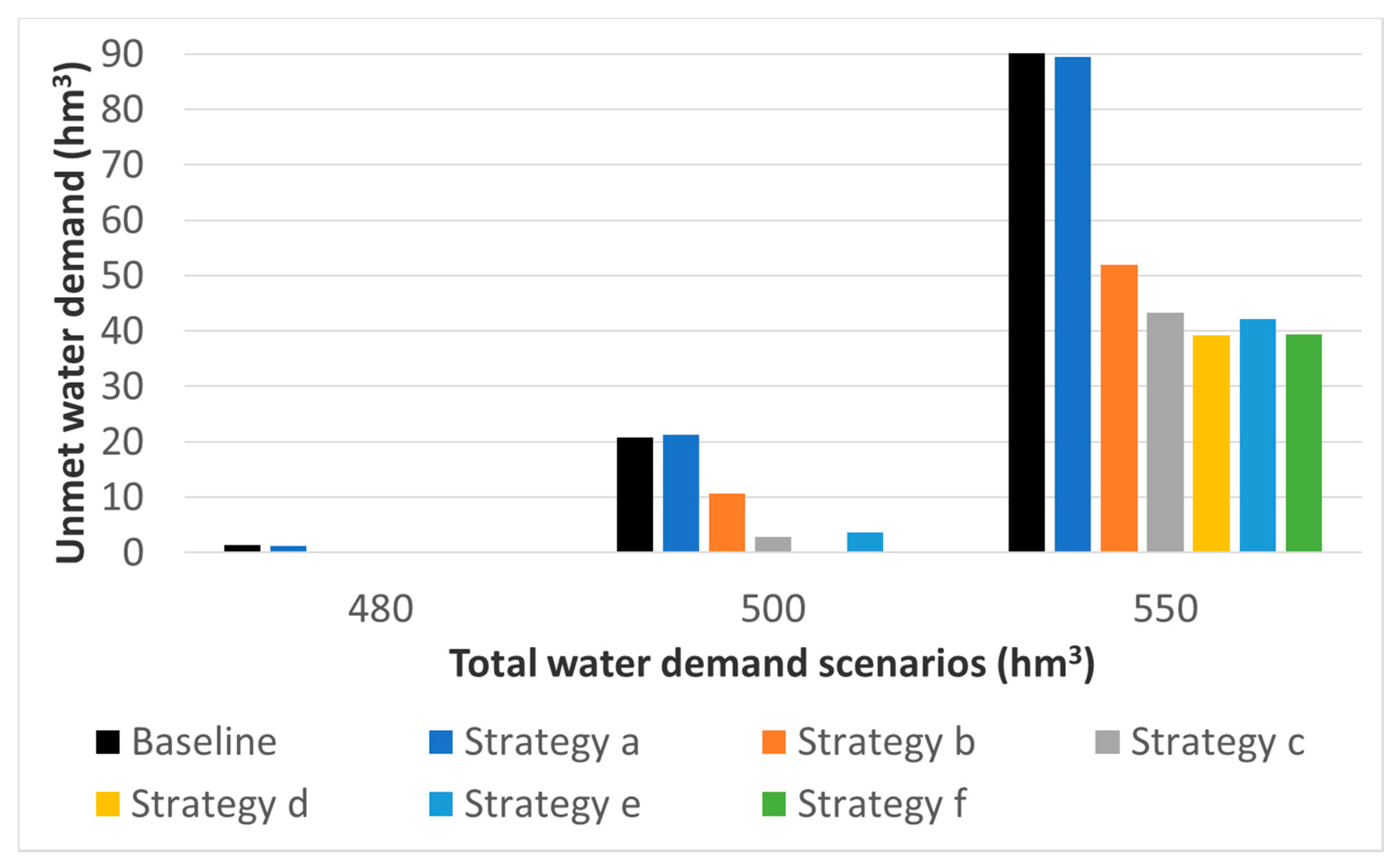
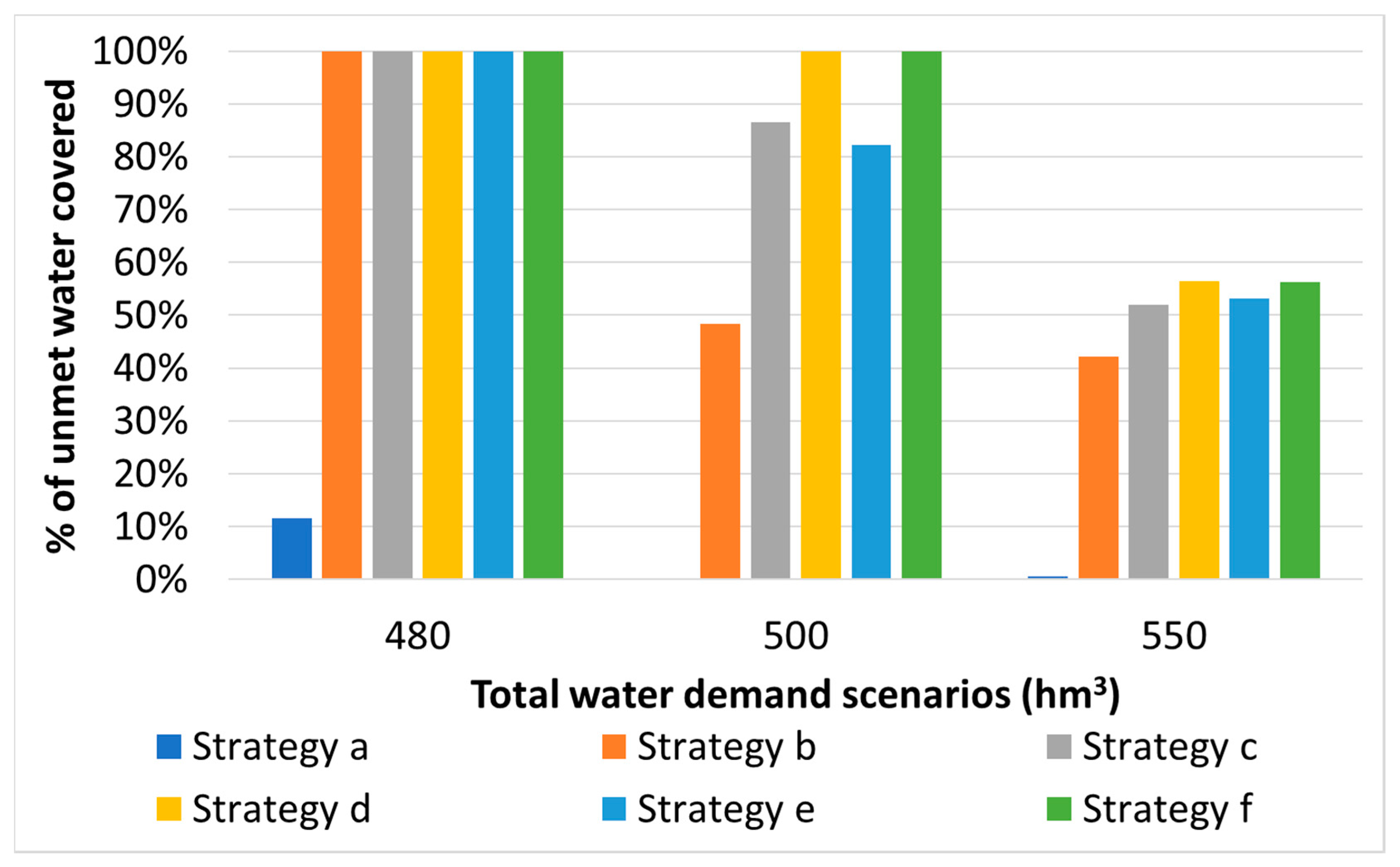
| Strategy | Description |
|---|---|
| Baseline | No policies are in place |
| Strategy a | Awareness raising campaigns when water availability is low |
| Strategy b | Awareness raising campaigns when water availability is low and/or every two years for six months |
| Strategy c | Awareness raising campaigns when water availability is low and/or every two years for 12 months |
| Strategy d | Awareness raising campaigns and restrictions when water availability is low and/or awareness raising campaigns every two years for 12 months |
| Strategy e | Awareness raising campaigns when water availability is low and/or every two years for 12 months plus water price increase when water availability is low for more than 12 months |
| Strategy f | Awareness raising campaigns and restrictions when water availability is low and/or awareness raising campaigns every two years for 12 months plus water price increase when water availability is low for more than 12 months |
| Strategy | Description |
|---|---|
| Scenario 1 | Baseline (370 hm3): Athens domestic water demand of 2009 [37] |
| Scenario 2 | Increased water demand (450 hm3): used in the raw water cost study [36] resulting in a 97% reliability factor for the Athens hydrosystem |
| Scenario 3 | Increased population by 7% (480 hm3): used in the raw water cost study [36] resulting in a 95% reliability factor for the Athens hydrosystem |
| Scenario 4 | Increased population by 12% (500 hm3): used in the raw water cost study [36] resulting in a 97% reliability factor for a hypothetical upgrade of the Athens hydrosystem |
| Scenario 5 | Increased population by 20% (550 hm3): used in the raw water cost study [36] resulting in a 95% reliability factor for a hypothetical upgrade of the Athens hydrosystem |
| Mean Frequency of Use (times per day) | ||||||||||||||||||
|---|---|---|---|---|---|---|---|---|---|---|---|---|---|---|---|---|---|---|
| Average User | Low User | High User | ||||||||||||||||
| WDS | 1, 3, 4, 5 | 2 | 1, 3, 4, 5 | 2 | 1, 3, 4, 5 | 2 | ||||||||||||
| CL: | N | L | H | N | L | H | N | L | H | N | L | H | N | L | H | N | L | H |
| KS | 3.17 | 2.76 | 2.35 | 3.18 | 2.77 | 2.35 | 1.99 | 1.73 | 1.47 | 3.17 | 2.76 | 2.35 | 3.18 | 2.76 | 2.35 | 3.19 | 2.77 | 2.36 |
| HB | 5.29 | 4.81 | 3.7 | 5.30 | 4.82 | 3.71 | 4.95 | 4.51 | 3.47 | 5.29 | 4.81 | 3.7 | 5.30 | 4.82 | 3.71 | 5.31 | 4.83 | 3.71 |
| DW | 0.05 | 0.05 | 0.05 | 0.21 | 0.21 | 0.21 | 0.15 | 0.15 | 0.15 | 0.09 | 0.08 | 0.08 | 0.21 | 0.2 | 0.2 | 0.34 | 0.33 | 0.33 |
| WC | 7.38 | 5.98 | 4.94 | 7.41 | 6 | 4.97 | 4.95 | 4.01 | 3.32 | 7.38 | 5.98 | 4.94 | 7.41 | 6 | 4.97 | 7.45 | 6.03 | 4.99 |
| WM | 0.15 | 0.14 | 0.13 | 0.27 | 0.26 | 0.25 | 0.15 | 0.15 | 0.14 | 0.06 | 0.05 | 0.05 | 0.26 | 0.25 | 0.24 | 0.49 | 0.47 | 0.45 |
| SH | 0.55 | 0.54 | 0.45 | 0.77 | 0.76 | 0.63 | 0.46 | 0.45 | 0.37 | 0.55 | 0.54 | 0.45 | 0.75 | 0.75 | 0.62 | 0.98 | 0.97 | 0.81 |
| OU | 0.46 | 0.35 | 0.1 | 0.49 | 0.38 | 0.11 | 0.26 | 0.2 | 0.06 | 0.46 | 0.35 | 0.1 | 0.49 | 0.38 | 0.11 | 0.53 | 0.41 | 0.12 |
| WD | 157 | 138 | 113 | 190 | 171 | 142 | 126 | 113 | 93 | 152 | 133 | 108 | 188 | 169 | 140 | 229 | 208 | 176 |
| Water Supply Time Series # | ||||||||||||
|---|---|---|---|---|---|---|---|---|---|---|---|---|
| Water Demand Scenarios | Description | Water Demand (hm3) | 1 | 2 | 3 | 4 | 5 | 6 | 7 | 8 | 9 | 10 |
| Scenario 1 | Baseline | 370 | √ | √ | √ | √ | √ | √ | √ | √ | √ | √ |
| Scenario 2 | Increase water demand | 450 | √ | √ | √ | √ | √ | √ | √ | √ | √ | √ |
| Scenario 3 | 7% population increase | 480 | √ | √ | √ | + | √ | √ | √ | √ | √ | √ |
| Scenario 4 | 12% population increase | 500 | √ | √ | √ | + | √ | √ | √ | √ | √ | √ |
| Scenario 5 | 20% population increase | 550 | √ | √ | √ | + | √ | √ | √ | √ | √ | √ |
| Year | 2015 | 2016 | 2017 | 2018 | 2019 | 2020 | 2021 | 2022 | 2023 | 2024 | ||||||||||
|---|---|---|---|---|---|---|---|---|---|---|---|---|---|---|---|---|---|---|---|---|
| Water supply time series 4 | 0 | 0 | 0 | 0 | 0 | 0 | 0 | 0 | 0 | 0 | 0 | 0 | 1 | 1 | 1 | 1 | 0 | 0 | 0 | 0 |
| Strategy a | * | * | * | * | ||||||||||||||||
| Strategy b | * | * | * | * | * | * | ||||||||||||||
| Strategy c | * | * | * | * | * | * | * | * | ||||||||||||
| Strategy d | * | * | * | * | * | * | * | * | ||||||||||||
| - | - | - | - | |||||||||||||||||
| Strategy e | * | * | * | * | * | * | * | * | ||||||||||||
| + | ||||||||||||||||||||
| Strategy f | * | * | * | * | * | * | * | * | ||||||||||||
| - | - | - | - | |||||||||||||||||
| + | ||||||||||||||||||||
| Water Demand Scenarios | Description | Total Water Demand (hm3) | WDM Strategies | ||||||
|---|---|---|---|---|---|---|---|---|---|
| Baseline | a | b | c | d | e | f | |||
| Scenario 3 | 7% population increase | 480 | + | + | √ | √ | √ | √ | √ |
| Scenario 4 | 12% population increase | 500 | + | + | + | + | √ | + | √ |
| Scenario 5 | 20% population increase | 550 | + | + | + | + | + | + | + |
© 2019 by the authors. Licensee MDPI, Basel, Switzerland. This article is an open access article distributed under the terms and conditions of the Creative Commons Attribution (CC BY) license (http://creativecommons.org/licenses/by/4.0/).
Share and Cite
Koutiva, I.; Makropoulos, C. Exploring the Effects of Alternative Water Demand Management Strategies Using an Agent-Based Model. Water 2019, 11, 2216. https://doi.org/10.3390/w11112216
Koutiva I, Makropoulos C. Exploring the Effects of Alternative Water Demand Management Strategies Using an Agent-Based Model. Water. 2019; 11(11):2216. https://doi.org/10.3390/w11112216
Chicago/Turabian StyleKoutiva, Ifigeneia, and Christos Makropoulos. 2019. "Exploring the Effects of Alternative Water Demand Management Strategies Using an Agent-Based Model" Water 11, no. 11: 2216. https://doi.org/10.3390/w11112216
APA StyleKoutiva, I., & Makropoulos, C. (2019). Exploring the Effects of Alternative Water Demand Management Strategies Using an Agent-Based Model. Water, 11(11), 2216. https://doi.org/10.3390/w11112216






